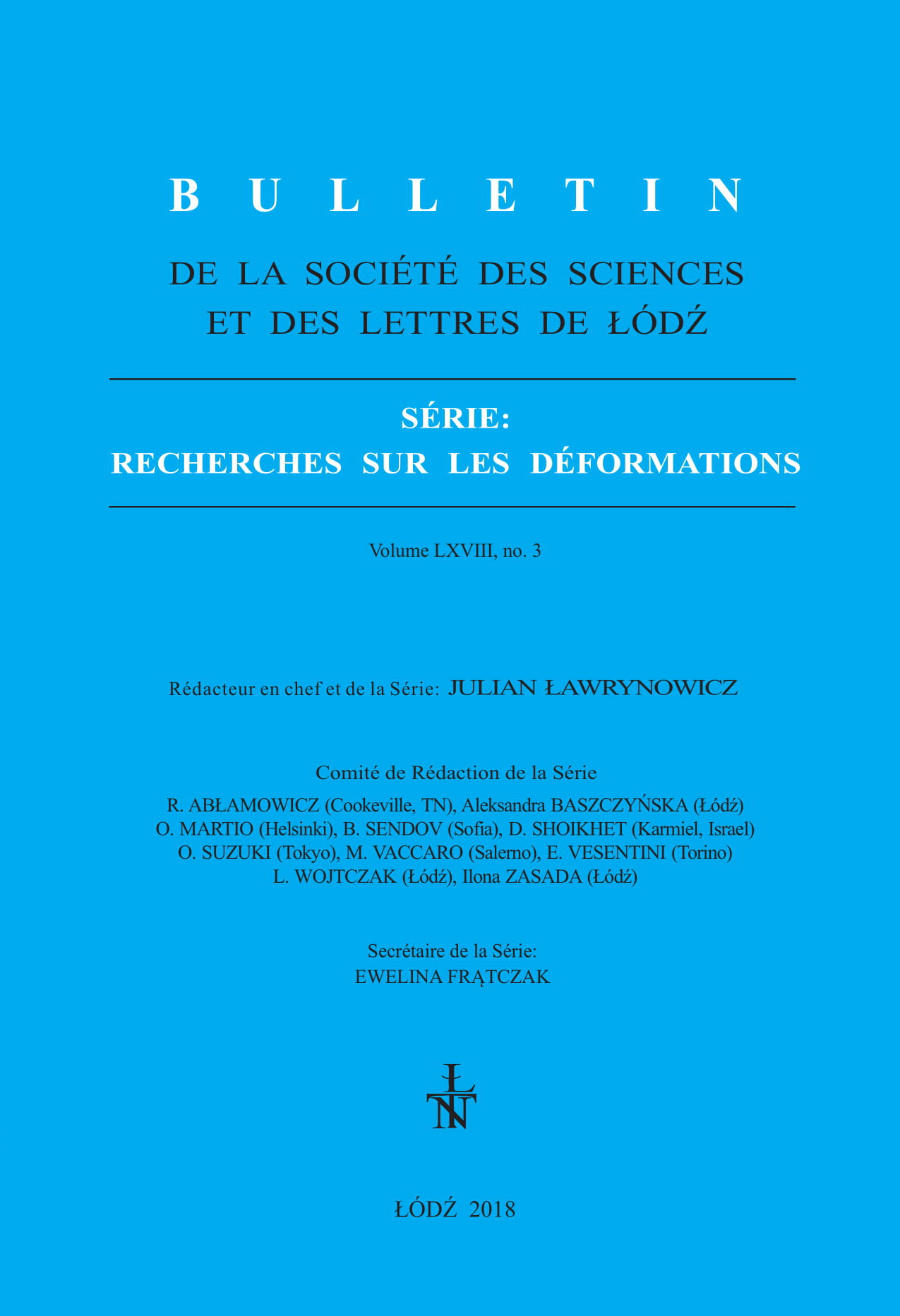Method for generating of Archimedian triangular connective operators
DOI:
https://doi.org/10.26485/0459-6854/2018/68.3/5Keywords:
T-norms, S-norms, T-operators, connective generatorsAbstract
Archimedean triangular operators form the basis of the tools for development, analysis and designing of fuzzy systems. They are generated by simple, monotone, single-valued and continuous functions. The basic sets of logical connectives of fuzzy systems are analyzed. It is shown that they are divided into conditional and algebraic ones. The well-known methods for generating of Archimedean triangular operators are described. Limitation of the functional characteristics of such generated operators is shown. To expand them, a method for generating has been created, which makes it possible to build new parameterized operators. Examples of constructing both new operators and those that generalize the already known ones are given. The tendency of the change of the characteristic hyper surface, which is build by new operator, is revealed.
References
L. A. Zadeh, Fuzzy sets, Inform. Contr. 8 (1965), 338–353.
H. T. Nguen, E. A. Walker, A first course in fuzzy logic, Chapmen & Hall/CRC, Roca Raton, 2006.
C. E. Alsina, E. Trillas, L. Valverde, On some logical connectives for fuzzy theory, J. Math. Anal. Appl. 93 (1983), 15–22.
J. Dombi, A general class of fuzzy operators, the De-Morgan class of fuzzy operators and fuzziness induced by fuzzy operators, Fuzzy Sets and Systems 8 (1982) 149–163.
G. A. Klir, T. A. Folger, Fuzzy sets, uncertainty and information, Prentice-Hall, Englewood Cliffs, NJ, 1988.
D. Dubois, H. Prade, New results about properties and semantics of fuzzy settheoretic operators, in: Fuzzy Sets, Wang and Chang, Eds. New York: Plenum Press, 1980, 59–75.
S. Roychowdhury, B. H. Wang, Composite generalization of Dombi class and a new family of T-operators using additive-product connective generator, Fuzzy Sets Syst. 66 (1994), 329–346.
K. Menger, Statistical metric spaces, Proc. Nat. Acad. Sci. 28, (1942), 535–537.
G. A. Klir, B. Yang. Fuzzy sets and fuzzy logic, Prentice-Hall, New Jersy, 1995.
B. Schweizer, A. Sklar A., Associative functions and abstract semi groups, Publicationes Mathematicae Debrecen 40 (1963), 69–81.
C. Alsina, M. J. Frank, B. Schweizer. Associative functions: triangular norms and copulas. Hackensack, World Scientific, 2006.
E. P. Klement,R. Mesia,E. Pap. Triangular norms. Kluwer Academic Publishers. Dordrecht- Boston-Londod. 2000.
R. R. Yager, On a general class of fuzzy connectives, Fuzzy Sets Syst. 4 (1980), 235–242.
J. C. Fodor, Contrapositive symmetry of fuzzy implications, Fuzzy Sets Syst. 69 (1995), 141-156.
D. Dubois, H. Prade, A review of fuzzy set aggregation connectivies, Inform.Sci. 36, 85–121.
H. Hamacher, Uber logische verknunpfungenn unssharfer Aussagen und deren Zugenhorige Bewertungsfunktione, in: Progress in Cybernatics and Systems Research, Trappl, Klir, Riccardi, Eds. Washington, DC: Hemisphere, 3 (1978), 276–288.
M. J. Frank, On simulataneous associativity of F(x, y) and x + y - F(x, y), Aequationes Math. 19 (1979), 194–226.
J. Aczel, Lectures on Functional Equations and Their Applications. New York: Academic, 1966
R. A. Vorobel, Additive-multiplicative generator of logical connectives in fuzzy systems, Information Extraction and Proces. 45 (121), (2017), 63–68.
R. Vorobel, Methods of triangular norms construction, in: Proceedings of the Int.
Sci. Conf. Modern Problems of Mathematical Modeling, Computational Methods and Information Technologies, 2 -4 March, 2018, Rivne, Ukraine, 151-163.
R. A. Vorobel. Logarithmic image processing, Kyiv: Naukova Dumka, 2012.


